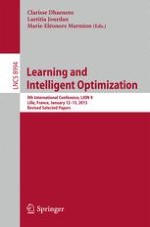This book constitutes the thoroughly refereed post-conference proceedings of the 9th International Conference on Learning and Optimization, LION 9, which was held in Lille, France, in January 2015.
The 31 contributions presented were carefully reviewed and selected for inclusion in this book. The papers address all fields between machine learning, artificial intelligence, mathematical programming and algorithms for hard optimization problems. Special focus is given to algorithm selection and configuration, learning, fitness landscape, applications, dynamic optimization, multi-objective, max-clique problems, bayesian optimization and global optimization, data mining and - in a special session - also on dynamic optimization.
